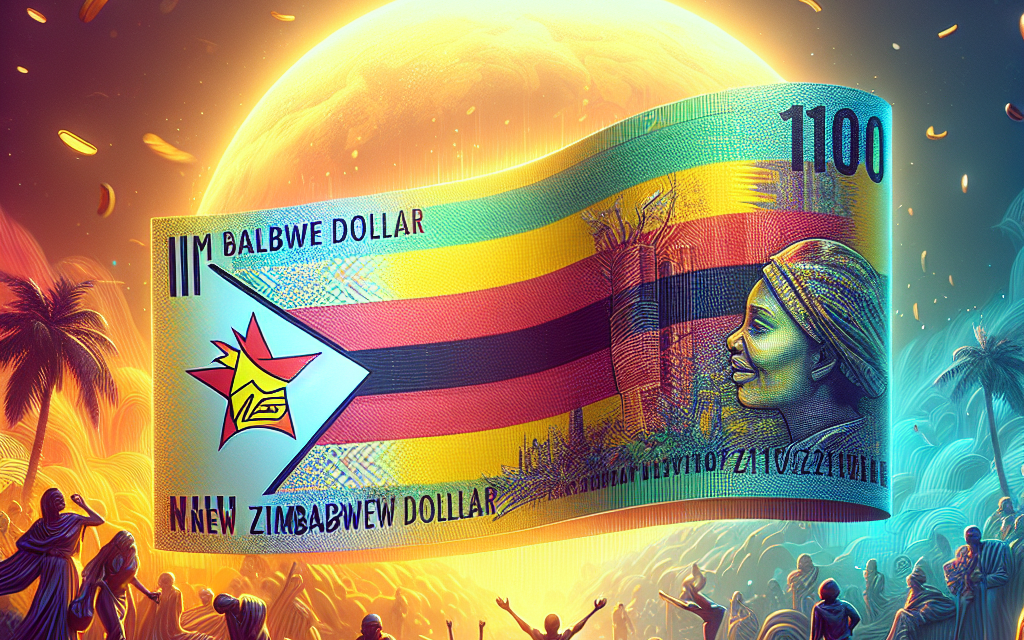So you’re curious about the official currency of Zimbabwe, huh? Well, let me tell you, it’s a story that goes beyond just money. Zimbabwe has seen its fair share of economic turmoil, with hyperinflation reaching astronomical levels in recent years. But amidst all the chaos, there is a currency that has prevailed – the Zimbabwean dollar. Introduced in 2019, this currency replaced a basket of foreign currencies, including the US dollar, and has since become the sole legal tender in the country. It’s a currency that symbolizes the resilience of the Zimbabwean people and their hope for a brighter economic future.
History of Zimbabwe’s Currency
Zimbabwe’s currency has undergone significant changes and challenges throughout its history. Understanding the evolution of Zimbabwe’s currency is crucial to comprehending the current state of its monetary system. This article will explore the pre-independence period, the post-independence period, the era of hyperinflation and the Zimbabwean dollar, the introduction of bond notes and the RTGS dollar, the current currency situation with multiple currencies in circulation dominated by the US dollar, the pros and cons of dollarization, the efforts to introduce a new Zimbabwean currency, and the future prospects for Zimbabwe’s currency.
Pre-independence period
Before Zimbabwe gained independence from British colonial rule in 1980, the official currency was the Rhodesian dollar. This currency was introduced in 1970 to replace the Rhodesian pound and was used until Zimbabwe’s independence. The Rhodesian dollar had a controversial history due to the political situation in Rhodesia, which eventually led to international sanctions against the country.
Post-independence period
Following independence, Zimbabwe initially adopted the Zimbabwean dollar in 1980 as its official currency. At the time, the Zimbabwean dollar had a strong value compared to major international currencies. However, economic challenges, mismanagement, and political crises in subsequent years led to a decline in the value of the Zimbabwean dollar and a series of currency reforms.
Hyperinflation and the Zimbabwean Dollar
Zimbabwe’s currency faced its most significant crisis in the late 2000s when the country experienced hyperinflation, reaching astronomical levels. The Zimbabwean dollar rapidly lost value, causing severe economic turmoil and hardship for the people. In response, the Reserve Bank of Zimbabwe introduced higher denomination banknotes, eventually culminating in the issuing of a 100 trillion Zimbabwean dollar bill, which became virtually worthless.
Introduction of the Bond Notes and the RTGS Dollar
Bond Notes
To deal with the severe shortage of physical cash and combat rampant inflation, the Reserve Bank of Zimbabwe introduced bond notes in 2016. Bond notes were intended to be at par with the US dollar and were backed by a bond guarantee from the African Export-Import Bank. However, they quickly lost their value in the parallel market, leading to a de-facto devaluation and further economic challenges.
RTGS Dollar
In 2019, the Reserve Bank of Zimbabwe launched the Real-Time Gross Settlement (RTGS) dollar as the country’s official currency. The RTGS dollar is a digital unit of currency, represented electronically and used for transactions through mobile money platforms. The introduction of the RTGS dollar aimed to address the cash shortage issue and promote financial stability. However, its success has been limited, with the US dollar remaining the dominant currency in everyday transactions.
Current Currency of Zimbabwe
Multiple currencies in circulation
Currently, Zimbabwe operates with a multi-currency system, where several currencies are in circulation alongside the RTGS dollar. These currencies include the US dollar, South African Rand, Botswana Pula, Chinese Yuan, and the British Pound. This approach allows people to use different currencies for specific purposes, although the US dollar remains the most widely accepted and preferred currency.
Dominance of the US Dollar and other foreign currencies
The US dollar, due to its stability and widespread acceptance, has emerged as the dominant currency in Zimbabwe. Many businesses, especially those in urban areas and major cities, price their goods and services in US dollars. The reliance on foreign currencies is a reflection of the lack of confidence in the RTGS dollar and the overall stability of the Zimbabwean economy.
The Pros and Cons of Dollarization
Advantages of Dollarization
Dollarization, or the wide usage of a foreign currency as the primary medium of exchange, has both advantages and disadvantages for Zimbabwe. One of the significant advantages of dollarization is the stability it brings to the economy. The US dollar is widely recognized and accepted, providing a reliable means of trade both domestically and internationally. Dollarization also reduces currency risk and helps attract foreign investment, as businesses can have confidence in the stability of the currency they will be dealing with.
Disadvantages of Dollarization
On the other hand, dollarization can have its drawbacks. One major concern is the loss of control over monetary policy. With the use of a foreign currency, Zimbabwe cannot independently manage its monetary tools, such as interest rates and money supply, to stimulate economic growth or control inflation. Dollarization also exacerbates income inequality as those who can access US dollars have a significant advantage over those who rely on local currency.
Efforts to Introduce a New Zimbabwean Currency
Plans to reintroduce the Zimbabwean Dollar
Despite the challenges faced with the Zimbabwean dollar in the past, the government has expressed intentions to reintroduce a new Zimbabwean currency. This move aims to regain monetary control and reduce reliance on foreign currencies. The re-establishment of a national currency is seen as a symbol of economic independence and sovereignty for Zimbabwe.
Challenges and delays in implementing the new currency
However, the implementation of a new Zimbabwean currency has faced numerous challenges and delays. Building trust in the new currency is crucial, considering the past experiences of hyperinflation and currency instability. Economic reforms, including curbing inflation and establishing macroeconomic stability, will be necessary prerequisites for successfully introducing a new currency.
The Future of Zimbabwe’s Currency
Economic reforms and stability
The future of Zimbabwe’s currency hinges on achieving economic reforms and stability. The government needs to address underlying issues such as corruption, fiscal mismanagement, and a lack of investor confidence. Economic policies that promote productivity, attract foreign investment, and encourage export growth can help create a solid foundation for a new Zimbabwean currency.
Potential for a new Zimbabwean currency
If Zimbabwe successfully implements economic reforms and establishes stability, the potential for a new Zimbabwean currency becomes more feasible. A new currency would allow the country to regain control over its monetary policy and strengthen its economic independence. However, careful planning, effective implementation, and the trust of both domestic and international stakeholders will be crucial to ensure the success of a new currency.
In conclusion, Zimbabwe’s currency has experienced a tumultuous history, marked by hyperinflation, the introduction of bond notes and RTGS dollar, and the dominance of foreign currencies. The pros and cons of dollarization present both opportunities and challenges for Zimbabwe’s economic trajectory. Efforts to introduce a new Zimbabwean currency face numerous obstacles, but could potentially restore monetary autonomy. The future of Zimbabwe’s currency depends on economic reforms, stability, and the ability to build trust in a new currency.












